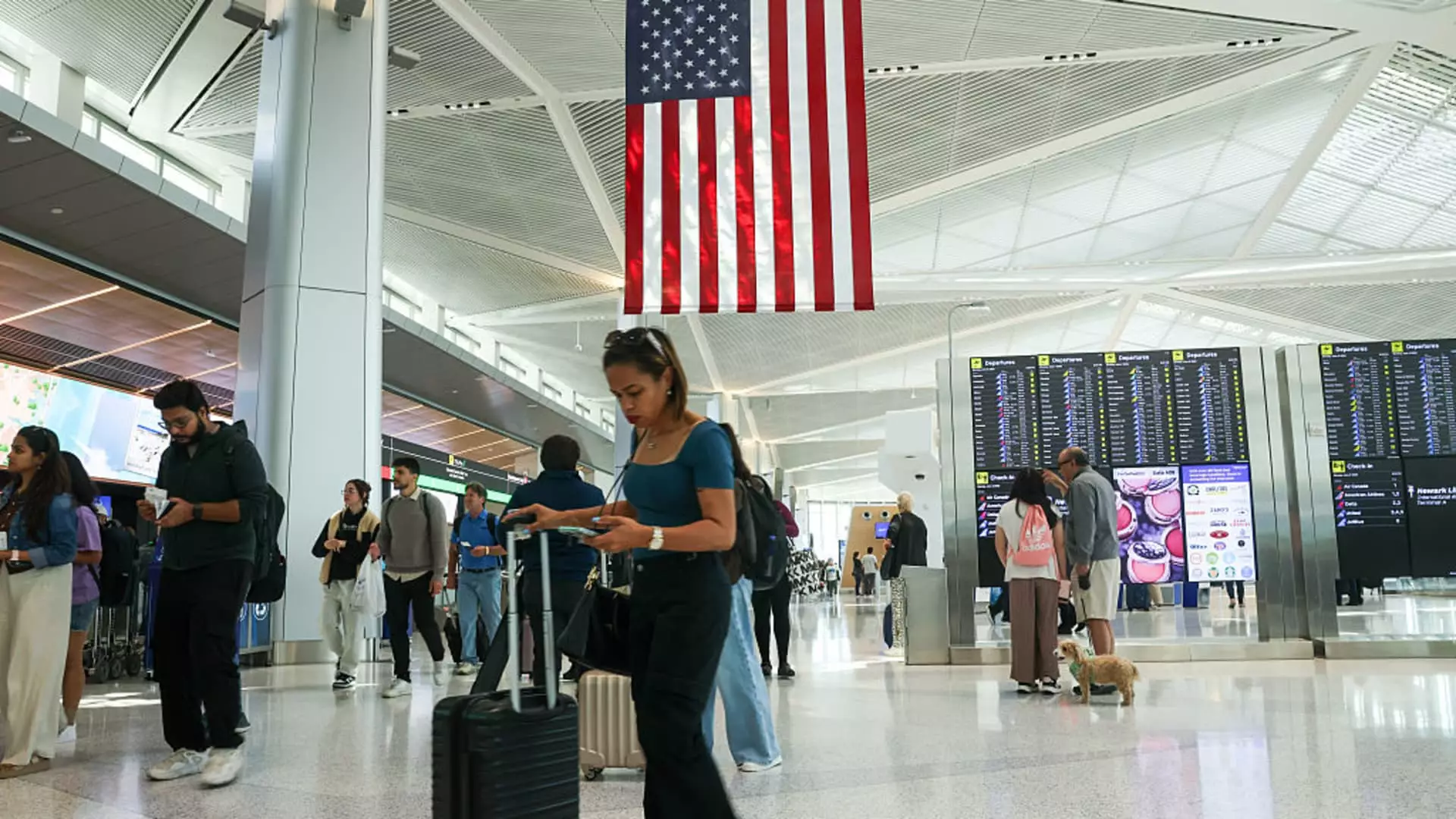As millions of Americans flock to airports for the July 4th holiday, there’s an undercurrent of unease that airlines refuse to acknowledge openly. The prevailing narrative suggests a summer of vibrant travel and lower fares, but behind this façade lies a fragile industry teetering on the brink of deeper issues. While fare trackers report that domestic round-trip tickets hover around $265—a modest dip compared to recent years—this seemingly positive trend masks a complex reality. Airline executives such as Southwest’s Bob Jordan tout the summer sale as a sign of resilience, but their comments drip with an undercurrent of concern. Are these lower prices a sign of healthy competition, or are they indicators of looming crisis?
Consumer demand remains disappointingly tepid, especially considering the significant capacity airlines have historically relied upon for profitability during peak seasons. The fact that airlines, including Delta, American, and Alaska, have already retracted their optimistic forecasts for 2025 reveals an industry riddled with uncertainty. The reason? A perfect storm of economic headwinds—rising costs, unpredictable tariffs, and a stark decline in international travelers—hamper revival efforts. The robust travel numbers seen during the pre-pandemic era seem increasingly distant, with many questioning whether the industry’s foundational assumptions about recovery were overly optimistic.
The Fragile Economics of Commercial Aviation
The airline sector’s financial landscape is more volatile than ever. With revenue streams drying up, companies are forced into difficult decisions—primarily, trimming unprofitable routes during off-peak times. It’s a painful but perhaps necessary step, as airlines seek to preserve cash while their core quarters provide most of their profits. Still, the outlook for the remainder of 2024 remains bleak, with earnings reports beginning to confirm what many industry insiders have suspected: demand isn’t rebounding strongly enough to sustain previous levels of profitability.
Despite healthy TSA screening numbers—over 18.5 million Americans passing through airports—the quality of demand isn’t matching the quantity. The biggest travel volume spikes occurred on single record-breaking days, but those peaks mask the overall sluggishness. Airline executives are often quick to highlight “stability,” but this argument sounds hollow when observed against the backdrop of declining bookings and cautious consumer spending. Card data analysts reflect this uncertainty, noting nearly an 12% decline in airline-related expenditures in June alone.
This decline paints a worrying picture: despite the easing of prices, consumers are simply not flying as much. And that’s with a backdrop of high job numbers and resilient labor markets. If anything, the sustained economic strength—while generally positive—seems disconnected from the airline industry’s stagnation. This disconnect raises critical questions: Are airlines underestimating the shift in consumer priorities? Or are they simply unprepared for the structural changes in global travel?
International Travel: A Double-Edged Sword
While domestic markets continue to struggle, international travel appears to be a rare bright spot—yet even here, the illumination is flickering. U.S. international flights, particularly to Europe and parts of Asia, have seen some resurgence. Fares to Europe, for instance, have fallen to pre-pandemic levels, suggesting increased competition and a globalization of reduced travel costs. But beneath these numbers lies a sobering truth: the overall volume of international travelers is still below pre-pandemic levels, with some markets suffering from diplomatic tensions, economic slowdowns abroad, and lingering travel apprehensions.
The lower fares for international trips could indicate airlines’ desperation to fill seats, but it also signals their desperation to keep revenue flowing. Price discounts across foreign markets aren’t sustainable in the long term, especially if global economic uncertainties persist. Airlines may find themselves caught in a vicious cycle—cutting prices to attract travelers while enduring slim profit margins, all amidst a broader economic landscape that remains unpredictable and unsettled.
The core problem plaguing commercial aviation today is a profound misalignment between capacity and demand. Airlines have overestimated the resiliency of travel demand, driven by overly optimistic projections and a desire to quickly recoup pandemic-related losses. The result is an industry warning signal: a looming capacity glut that could hollow out profits further, failing to match declining consumer willingness to spend. Structural issues, such as geopolitical tensions and economic vulnerabilities, threaten to exacerbate this misalignment.
In this scene of economic uncertainty, airlines seem to cling to a fragile hope—hoping that demand will spike unexpectedly, that travel restrictions will lift, or that the global economy will suddenly regain lost momentum. But history suggests that such hope is fragile at best. It’s time to confront the reality that the airline industry, long perceived as resilient, is now vulnerable to fundamental shifts that may permanently alter its landscape. The summer’s seemingly modest fares and record TSA numbers may just be the calm before a more significant storm, one that exposes the flawed assumptions underlying the modern chaos of commercial aviation.


Leave a Reply